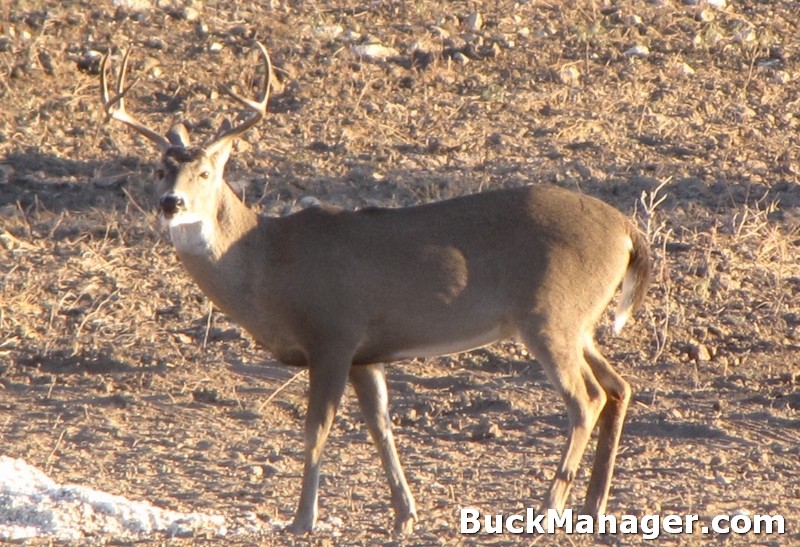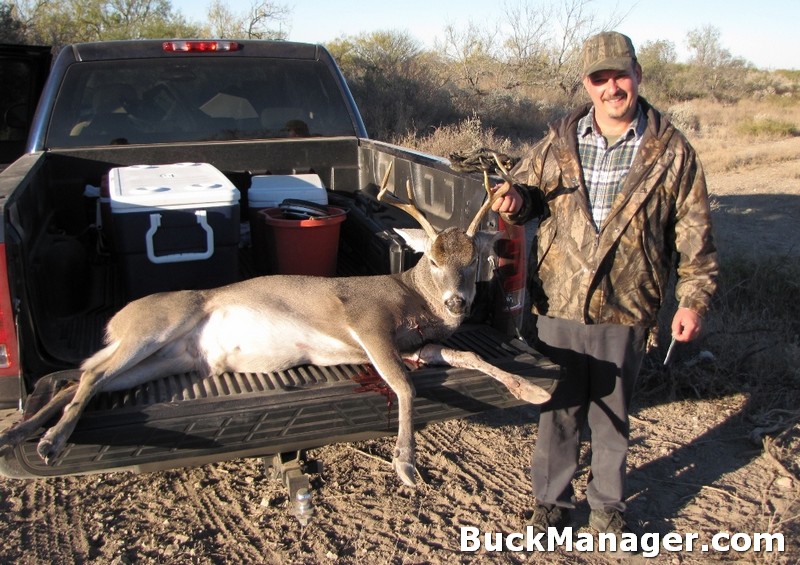Selective harvest is an important part of white-tailed deer management. This is equally true for both the buck and doe segments of a deer population, but many hunters become obsessed with trying to determine which bucks to shoot or not shoot. Buck harvest is part of the equation, but how should the deer on your property be managed, hunted?
For regular visitors to this site, you know that I have covered shooting deer and harvest management in the past, but this time I really want to stress the importance of not stressing out over the harvest aspect of a deer management program. Selective harvest is not something that can be perfectly implemented on a property, but rather a strategy to remove less desirable animals in an attempt improve the deer herd, whether that simply be nutritionally or possibly even genetically.
Whitetail Buck Management
The most controversial issue on any hunting property typically involves around what is and is not a cull or management buck. There is no stock answer to this debate because the quality of a cull buck will vary from property to another. It could be said that one deer hunter’s “trash” is another hunters treasure.
We have all seen bucks with obviously inferior antlers that have been shot as culls, but I bet you have also seen some really good looking bucks on the web, in magazines, and on television that were harvested by someone and referred to as cull deer. So what’s the deal?

Managing Bucks by Age
I mentioned earlier that the quality of “cull deer” will vary from property to property, but the most important consideration to keep in mind when thinking about cull deer is that the quality of bucks will vary within each age class (cohort) on a particular property.
Grade bucks of the same age on a comparative basis and the manager/hunter will be comparing apples to apples. This is the easiest way to determine what may or may not be a cull buck on a piece of property — bucks of the same age must be judged head-to-head against one another to determine which has desired (or at least more desired) antler characteristics and which one will end up in the sausage. Hey, we all gotta eat!
An Example of Whitetail Buck Management
Believe it or not, there are some properties under intensive deer management that consider a yearling (1 1/2 years old) buck with 5 or less antler points a cull buck. This does not mean every property owner or guy trying to manage his deer hunting lease should hammer every deer with less than 5 points.
It would be grossly oversimplified (and a bad idea) to say everyone should do the same thing on their hunting property. This just would not be the case. There are just too many variables for a one-size-fits-all deer management approach for every property.
Spike Buck Management
Let’s discuss spike bucks for a minute. Now, this is a can of worms that hunters and even researchers have been actively discussing for decades, so I am not going to try to change anyone’s thoughts on the subject in this article. But, using the spike buck as an example, I just want to throw out an example of culling bucks by age class.
Let’s first assume that we need to harvest some number of bucks and that I am trying to improve the overall end-quality of bucks on a property. If two yearling spikes walk out and one has 3 inch antlers and the other has 10 inch antlers, I will shoot the one with shorter tines and leave the better buck of the same age every time. Why?
Because my goal when culling is to remove the most undesirable bucks. The 10 inch spike grew over 3 times as much antler as his same-aged friend.
Selective Harvest for Better, Mature Bucks
Although selective genetic manipulation through buck harvest is an important component of any whitetail deer management program, it is not the only component. Keep in mind that better deer habitat means better bucks at every age class. Overall, providing quality deer habitat is the best type of whitetail buck management.
A key to producing good deer on your hunting property may be to remove the very low-end bucks and then allow the rest to get some age on them. This strategy is best applied in areas where deer are at or have exceeded the carrying capacity of the property. If the deer density is low, below the carrying capacity, then it probably does not make sense to cull bucks since there are not many deer to spare. In this case, you will likely want to let each and every buck walk in hopes that it can grow older and eventually become a target for harvest.
The final key to buck management is to manage harvest. Harvest mature bucks and then cull by age class (if warranted) so that you remove no more than 20% of the total number of bucks in the area each year, and then provide the best deer habitat that you can so that all deer on your property remain healthy and bucks reach their full genetic potential.

Hey Buck Manager, enjoyed the article! Thanks!
SO, if I’m understanding this correctly, the article is saying that deer management has a core curriculum but that we should take into consideration our own management objectives. Then secondly, use selective harvest within age classes.
To touch on the spike example and not to start a wave of debate, I am understanding the concept of shooting the more “inferior” deer although if memory serves me correctly the debate is primarily over a possible change in antler growth with both nutrition and age. That being said and to change the gears a little, how does harvest management effect the doe harvest and how does this differ in respect to buck harvest?
I am an avid reader of this site and I appreciate all the helpful information I myself feel the same way as the previous post.
Great article!! Bring on the sausage….
Travis, there is no cookie-cutter approach to managing white-tailed deer. Each property is different. With regards to culling, it may not be warranted at all times depending on the buck to doe ratio and age structure of the buck herd. I would recommend that most ranches consider getting their buck to doe ratio where they want it before intensively culling. This is why I mentioned that many properties get caught up in cull buck harvest when there are other deer on the property that need to be harvested too… does.
With regard to the harvest of does, I recommend that properties maintain a base doe herd each winter. That number varies by property, but let’s say for example that it is 50. If surveys conducted in early fall estimate 55 does and 30 fawns, then a doe harvest of 20 does would be right on the money (5 excess adult does + 15 doe fawns produced) to maintain the base herd of 50 does. In addition, managers should tend to harvest older does, but more importantly keep the numbers where they should be.
I have a question about harvesting does. We harvest all our does before Thanksgiving so we don’t end up shooting bred does that bucks had to work hard for to breed. The problem becomes shooting enough mature does. Some will come out before Thanksgiving, but most are wise to our act and start showing up around mid-December (also probably when the food supplies are lower). We’ve tried everything to get them out with different feeds, alfalfa hay, etc. and even hunting them from obscure areas near oak thickets. I’m considering using a fawn-in-distress call to bring some in. My question is this: Is there any other way to lure in the mature does? I really hate harvesting my 1 1/2 and 2 1/2 yr old does as, you’re well aware, they carry (hopefully) the better genetic potential of a managed herd.
The most difficult deer to kill on any given property is not a buck, it is the old does. They do not need to come out in day light to breed as bucks sometimes do. They are #1 in the pecking order they get the best groceries. I promise you there are a lot more 6 1/2 year old does than there are 6 1/2 year old bucks.
I want to work in a deer management job. Any recommendations?
Stephen, it depends on exactly what you want to do. Deer management jobs can range from working at a single ranch to a private sector job to a position with a state wildlife department. If you plan on being a professional biologist, then you will first have to get an college education and on-the-ground experience to land the lead role as a ranch manager or state or federal biologist.
Of course, a degree is not necessary if you want to be involved with habitat management or a deer breeder facility or even helping out with guiding or harvest management. There is always a need to get work done, but you will still need experience.
Hunter D, good question about the harvest of mature does. My suggestion would be to hunt travel corridors or bait roadways and/or areas away from stands to help get your mature doe harvest up. They are smart, so getting out of the stand and away from the feeders can pay off.
This is some good information that has got me thinking about buck harvest on our property. It’s now apparent that our harvest practices in the past were not ideal. Thanks for the info.